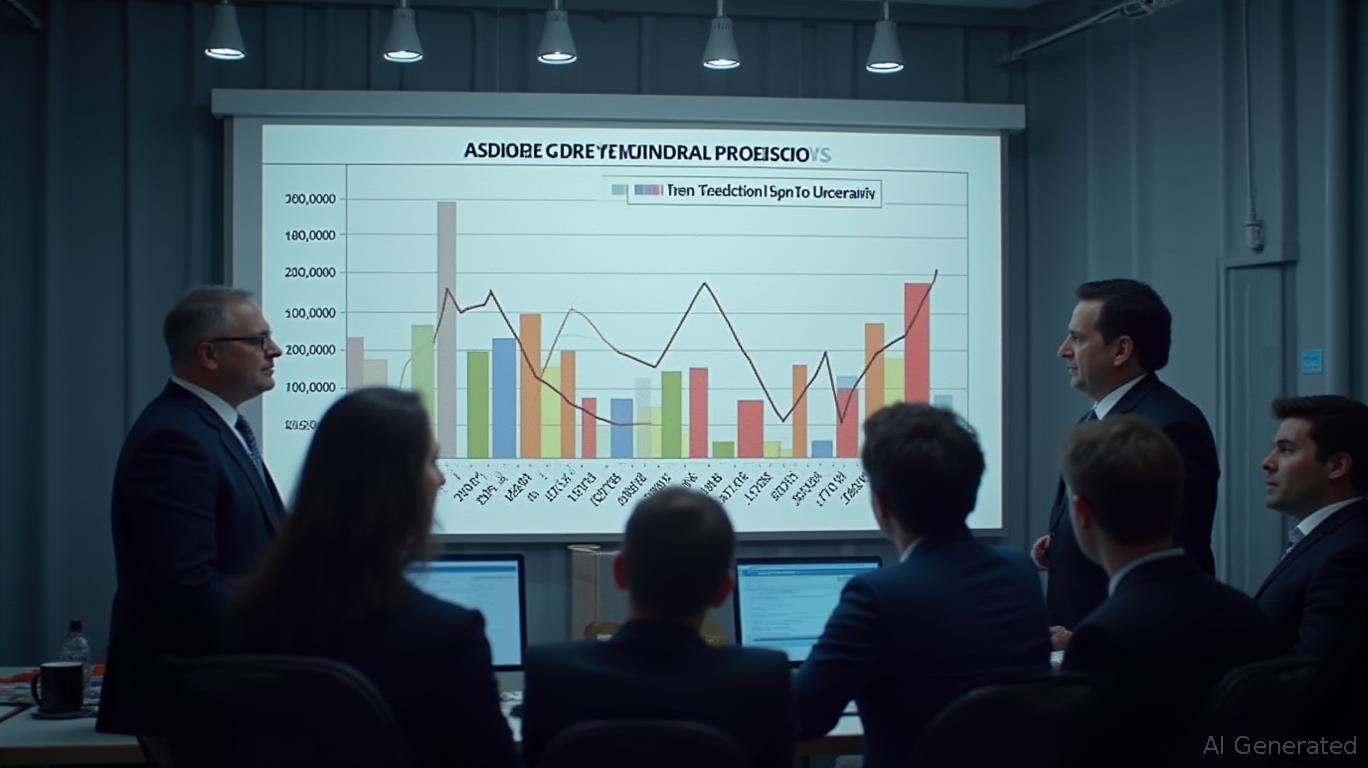Navigating Policy Uncertainty: Strategic Entry Points in a Tariff-Driven Market
The intersection of Federal Reserve policy ambiguity and escalating tariff impacts has created a volatile backdrop for investors. While uncertainty often breeds caution, it also presents opportunities to identify undervalued sectors poised to rebound. Let's dissect how these dynamics are shaping markets and where investors should look for strategic entries.
Ask Aime: Understanding the Market's Volatility Amid Rising Tariffs
The Fed's Dilemma: Balancing Growth and Inflation
The Federal Reserve's June 2025 projections reveal a committee torn between its dual mandates of price stability and full employment. GDP growth is now expected to clock in at just 1.4% for 2025—down from earlier forecasts—and inflation remains stubbornly elevated. The Fed's decision to hold rates steady at 4.25%-4.50% underscores its reluctance to cut prematurely, despite widening confidence intervals around its projections.
Ask Aime: How can I navigate the volatile market caused by Fed policy and tariff escalations?

The median federal funds rate path calls for gradual declines to 3.0% by 2027, but the dispersion of views among policymakers (ranging from 2.5%-4.4% in 2025) signals deep uncertainty. This ambiguity has kept investors on edge, with equity markets oscillating between optimism and caution.
Tariffs: A Double-Edged Sword
U.S. tariff policies have bifurcated the economy, with consumer goods sectors benefiting temporarily from inventory stockpiling while services face immediate inflationary pressures.
- Consumer Goods: Prices for vehicles, apparel, and furniture have dipped or stabilized due to pre-tariff stock buffers. However, these inventories are projected to dwindle by late 2025, risking a surge in prices.
- Services: Energy, insurance, and housing costs have already risen sharply. For instance, airfares jumped 4.1% in 2024, and auto insurance climbed 6%, driven by operational costs and supply-chain disruptions.
The average effective U.S. tariff rate hit 22.5% in 2025—the highest since 1909—yet the delayed impact on goods prices has created a “valuation gap” in sectors like retail and manufacturing.
Investor Sentiment: Fear vs. Opportunity
Market volatility has spiked as investors grapple with conflicting signals:
- Consumer Caution: Over 60% of households are altering spending habits, particularly in lower-income brackets. This has pressured cyclical sectors like autos and apparel.
- Corporate Strategy: Companies are delaying capital expenditures and hedging against tariff risks, amplifying earnings uncertainty.
The S&P 500's range-bound trading between 5,200–5,800 reflects this indecision. However, the divergence between tariff-affected sectors and those insulated by demand or pricing power offers a roadmap for strategic bets.
Strategic Entry Points: Where to Look Now
- Consumer Staples:
- Why: These companies benefit from stable demand and pricing power. Despite tariff fears, sectors like household goods and beverages have seen minimal margin pressure so far.
- Play: Consider ETFs like XLP (Consumer Staples Select Sector SPDR Fund) or individual stocks like Procter & Gamble (PG) or Coca-Cola (KO), which have strong balance sheets and global diversification.
- Utilities and Healthcare:
- Why: These defensive sectors are less exposed to tariff volatility and thrive in low-growth environments. Utilities also benefit from stable interest rates.
Play: Utilities ETF XLU or healthcare ETF XLV offer broad exposure. Companies like NextEra Energy (NEE) or UnitedHealth Group (UNH) combine sector resilience with dividend stability.
Tariff-Resistant Tech:
- Why: Tech firms with domestic supply chains or pricing flexibility (e.g., cloud services, software) are less vulnerable to tariff shocks.
- Play: Cloud leaders like Microsoft (MSFT) or cybersecurity firms like CrowdStrike (CRWD) could outperform as tariffs pressure hardware-dependent peers.
Timing the Turn: Key Triggers to Watch
- Inventory Depletion: Monitor consumer goods inventories (e.g., auto OEMs' days of supply) for signs of price volatility. A spike could trigger sector-specific buying opportunities.
- Fed Policy Shifts: A surprise rate cut or revised inflation targets could ease volatility and boost cyclicals.
- Tariff Truces: Watch for diplomatic breakthroughs with China or the EU, which could lift sectors like industrials and semiconductors.
Conclusion
The current environment of Fed uncertainty and tariff-driven volatility is a double-edged sword. While it fuels short-term anxiety, it also creates mispricings in sectors like consumer staples and utilities. Investors who focus on resilient balance sheets, pricing power, and structural demand trends can position themselves to capitalize on the eventual clarity—or even the market's overreaction to it.
The key is to avoid chasing momentum and instead buy the dips in sectors that have been unfairly punished by macro noise. As the saying goes: “Be greedy when others are fearful.” The time to act is now.

Comments
No comments yet